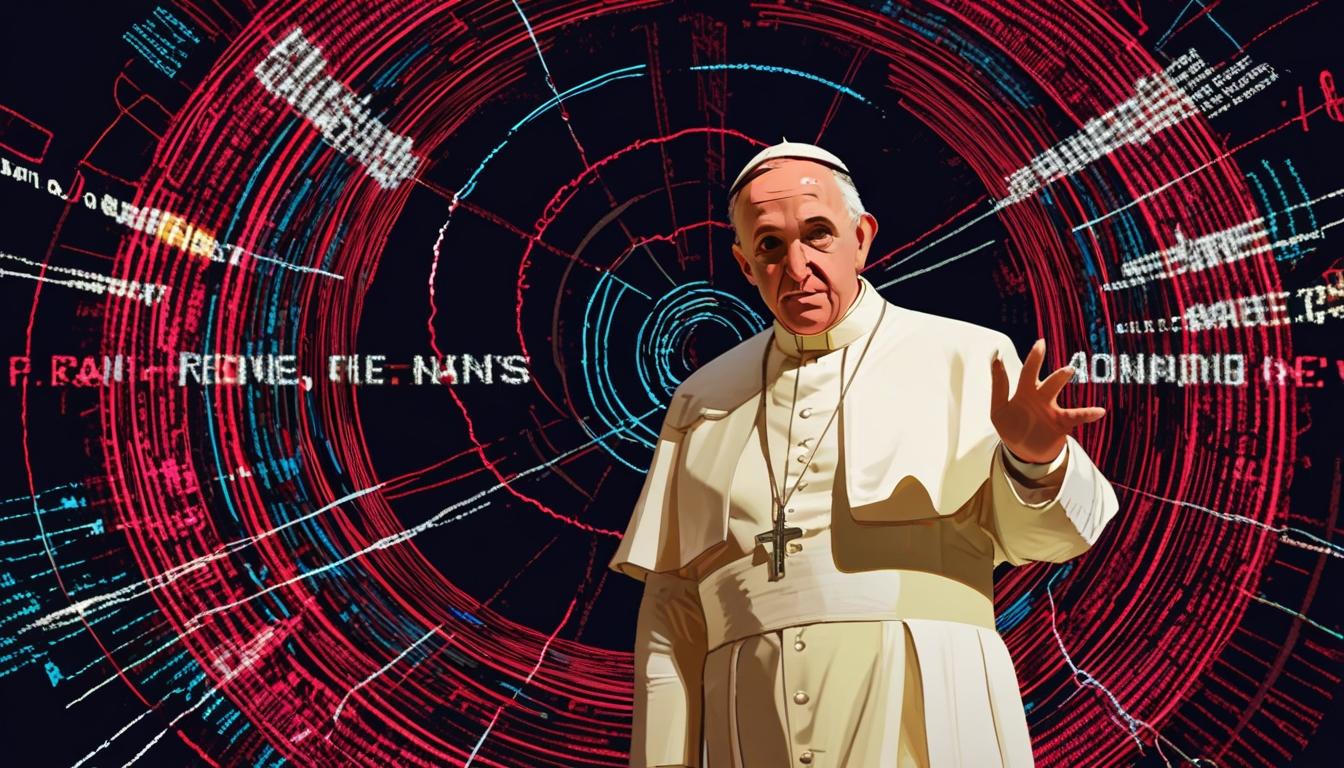The death of Pope Francis, the 88-year-old Argentine leader of the Catholic Church, sparked an outpouring of global mourning, but was also accompanied by a surge of disinformation across social media and online platforms. The wave of misleading content emerged alongside the condolences and tributes ahead of his funeral, held on Saturday.
Pope Francis, who had helmed the Catholic Church for 12 years, was no stranger to disinformation. He had been a vocal critic of falsehoods and false narratives, repeatedly warning about their dangers. In a 2018 message for World Communications Day, he likened the modern phenomenon of “fake news” to the “snake-tactics” of the serpent in the biblical Christian story, emphasising that even slight distortions of the truth could have dangerous consequences. “There is no such thing as harmless disinformation,” he wrote.
The pope himself had previously been central to one significant episode of misinformation during the 2016 U.S. presidential election. At the time, a widely circulated hoax falsely claimed that he endorsed Donald Trump, a story that became the most engaged-with election-related post on Facebook in the months before the vote, as reported by BuzzFeed News.
Following the pope’s passing, several falsehoods circulated that misrepresented his actions and interactions. One widely shared video purported to show Pope Francis brushing away the hand of President Trump—a figure whose deportation policies the pontiff had publicly criticised. However, this video was manipulated footage originally broadcast as a comedic skit on a late-night television show. Another clip wrongly alleged that Satanic rituals were performed during the pope’s funeral, though it was actually unrelated footage from Spain. Additionally, an image depicting Pope Francis with Holocaust survivors from 2014 was falsely presented as proof of his association with the Rothschild family, a recurring target in anti-Semitic conspiracy theories.
Experts have highlighted that such disinformation campaigns often exploit the heightened attention that major events attract. Mike Caulfield, a digital literacy specialist and author of a book on online information verification, told AFP that “content follows attention” and that public figures’ deaths become opportunities for some to push political agendas, promote conspiracies, or simply gain attention or financial benefit. This pattern has been seen following the deaths of other notable individuals, including Queen Elizabeth II in 2022, when false claims related to vaccines and criminal activity surfaced online.
In the aftermath of Pope Francis’s death, a number of images generated by artificial intelligence (AI) also recirculated, including a notable AI creation showing the pope draped in a rainbow LGBTQ Pride flag and another of him wearing a white puffer jacket, which had previously gone viral in 2023. New AI-generated fakes appeared as well—one showed the pope’s body in an open casket, accompanied by malicious links linked to scams, according to cybersecurity firm Check Point.
Pope Francis had expressed concerns about the potential misuse of AI technologies earlier in 2025, warning that they “can be misused to manipulate minds.” This statement stood among his final messages cautioning against the dangers of disinformation.
The Digital Journal reports that the wave of false content following the pope’s death illustrates ongoing challenges in the digital information landscape, especially around significant global events and figures.
Source: Noah Wire Services
